
PHYSICS OF PLASMAS
Scope & Guideline
Exploring the Dynamics of Plasma Physics
Introduction
Aims and Scopes
- Plasma Physics Fundamentals:
Research addressing the fundamental principles governing plasma behavior, including kinetic theory, magnetohydrodynamics (MHD), and wave-particle interactions. - Fusion Energy Research:
Studies focused on the behavior of plasmas in fusion devices, including inertial confinement fusion (ICF), magnetic confinement, and the dynamics of fusion reactions. - Plasma Diagnostics and Measurement Techniques:
Development and application of diagnostic tools for measuring plasma parameters such as density, temperature, and flow, critical for advancing plasma science. - Nonlinear Plasma Dynamics:
Investigations into nonlinear phenomena in plasmas, including instabilities, turbulence, and wave interactions that can impact plasma confinement and stability. - Applications of Plasma Technology:
Research on practical applications of plasma technology in various fields, such as materials processing, environmental science, and medical therapies. - Astrophysical and Space Plasmas:
Studies that explore plasma behavior in astrophysical contexts, including solar and space plasma phenomena, and their implications for space weather and cosmic events.
Trending and Emerging
- Machine Learning and Data-Driven Approaches:
An increasing number of studies are utilizing machine learning techniques to analyze plasma behavior and optimize experimental designs, indicating a trend towards integrating computational methodologies with traditional plasma physics. - High-Energy-Density Physics:
Research focusing on high-energy-density plasmas, particularly in the context of inertial confinement fusion and astrophysical phenomena, is becoming increasingly prominent as experimental capabilities expand. - Plasma-Material Interaction Studies:
As applications of plasmas in material processing grow, there is a rising interest in understanding the interactions between plasmas and various materials, particularly in the context of fusion reactors and advanced manufacturing technologies. - Nonlinear and Turbulent Plasma Dynamics:
There is a growing body of work addressing nonlinear effects and turbulence in plasmas, particularly in fusion devices, as researchers aim to understand and mitigate instabilities that affect confinement. - Astrophysical Plasma Phenomena:
Research exploring plasma processes in astrophysical contexts, such as solar flares and cosmic rays, is on the rise, reflecting a broader interest in understanding space weather and its impacts on Earth.
Declining or Waning
- Dusty Plasma Studies:
Research on dusty plasmas has become less prominent, possibly due to the maturation of this field and the increased focus on more complex plasma systems that integrate multiple species and conditions. - Low-Temperature Plasma Applications:
While low-temperature plasmas remain important, the volume of research published in this area has waned, as more attention is drawn to high-energy-density plasmas and their applications in fusion and astrophysics. - Classical Plasma Theory:
There has been a noticeable shift towards more complex and computationally intensive models that incorporate non-ideal effects, leading to a decline in publications focused solely on classical plasma theories.
Similar Journals

Frontiers in Astronomy and Space Sciences
Connecting Minds to Unravel the Mysteries of SpaceFrontiers in Astronomy and Space Sciences is a leading open access journal published by FRONTIERS MEDIA SA, based in Switzerland. Since its inception in 2015, this journal has provided a dynamic platform for researchers, professionals, and students to disseminate their findings across a wide spectrum of topics within the field of astronomy and astrophysics. With an impressive 2023 Impact Factor reflecting its relevance and contribution to the scientific community, it ranks in the Q2 category in Astronomy and Astrophysics, demonstrating a solid reputation among peers. The journal's commitment to open access ensures that all published research is freely available, fostering greater collaboration and knowledge sharing among astronomers worldwide. With a diverse range of articles spanning from theoretical investigations to observational studies, Frontiers in Astronomy and Space Sciences is an essential resource for anyone seeking to explore the wonders of the universe and share innovative ideas that push the boundaries of our understanding.
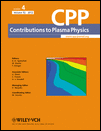
CONTRIBUTIONS TO PLASMA PHYSICS
Fostering Innovative Insights in Plasma ScienceCONTRIBUTIONS TO PLASMA PHYSICS is a distinguished journal dedicated to advancing the field of plasma physics, published by WILEY-V C H VERLAG GMBH. Since its inception in 1988, this journal has provided a platform for high-quality research, fostering collaboration and dissemination of knowledge in the condensed matter physics domain. With its current ranking of Q3 in the 2023 assessments, the journal is recognized for its contributions to the discipline, as indicated by its position in the Scopus rankings (Rank #252/434) and 42nd percentile within its category. Researchers and professionals engaged in plasma physics are encouraged to submit their work, as the journal aims to publish innovative studies that push the boundaries of current understanding and application in plasma phenomena. While currently not offering open access, the journal remains a vital resource for insights into the complexities and advancements in plasma research, operating from its base in Germany.
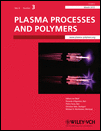
Plasma Processes and Polymers
Elevating Knowledge in the Realm of Plasma Processes and PolymersPlasma Processes and Polymers is a leading peer-reviewed journal published by WILEY-V C H VERLAG GMBH, focusing on the innovative field of plasma science and polymer technology since its inception in 2004. With an ISSN of 1612-8850 and an E-ISSN of 1612-8869, this journal has established its reputation within the scientific community, holding a commendable Q2 ranking in both Condensed Matter Physics and Polymers and Plastics for 2023. Recognized for its rigorous standards and impactful contributions to the field, it ranks in the top 20% of the Physics and Astronomy category and top 26% of the Materials Science category, as per Scopus metrics. Catering to researchers, professionals, and students alike, the journal publishes cutting-edge articles that advance understanding and application of plasma processes in polymer science, thereby bridging theoretical insights with practical implications. While currently not offering open access, it provides a critical platform for advancing knowledge and fostering innovation, making it essential reading for those at the forefront of polymer research and applications.
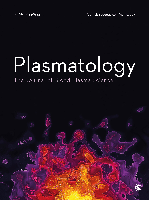
Plasmatology
Pioneering Discoveries in Hematological AdvancementsPlasmatology, published by SAGE Publications Ltd, is a pioneering open-access journal devoted to the field of hematology, focusing on the latest advancements and research in plasma science and its applications. Established in 2021, this journal aims to foster knowledge exchange among researchers, practitioners, and students by providing a platform for sharing innovative studies and reviews. While currently positioned in the Q4 quartile for hematology and ranking #111 in the Scopus database, Plasmatology is dedicated to enhancing its influence and reflecting the dynamic nature of hematological research. With access options freely available to all, the journal encourages a collaborative approach to address the challenges and developments in the field. Based in the United Kingdom, Plasmatology is an emerging resource for anyone interested in advancing their understanding and involvement in plasma research.

Jordan Journal of Physics
Cultivating Insight in the World of PhysicsJordan Journal of Physics is a pivotal scholarly platform published by YARMOUK UNIVERSITY, DEANSHIP RESEARCH & GRADUATE STUDIES, dedicated to the field of physics and its applications. Established in 2008, this journal serves as a crucial avenue for disseminating quality research and insights in various subfields of physics and astronomy. As a publication in the Q4 category per the 2023 metrics, the journal, while currently placed in the lower quartile, offers a unique opportunity for emerging researchers to contribute their findings. With an ISSN of 1994-7607 and a commitment to fostering academic discourse, the Jordan Journal of Physics provides access to original research articles, reviews, and case studies aimed at enriching knowledge and innovation. While it does not presently offer open access, efforts are underway to expand its reach and visibility in the global academic context. Researchers and scholars will find this forum to be an essential resource for advancing their work and connecting with a community dedicated to exploration and understanding of the fundamental principles that govern our universe.

PLASMA PHYSICS REPORTS
Advancing the Frontiers of Plasma ResearchPLASMA PHYSICS REPORTS, published by PLEIADES PUBLISHING INC, is a distinguished journal that caters to the intricate and evolving field of plasma physics and its applications within condensed matter physics and astronomy. With an ISSN of 1063-780X and an E-ISSN of 1562-6938, the journal serves as a pivotal platform for researchers, professionals, and students to disseminate groundbreaking work and foster collaboration among experts in the field. The journal operates as a non-open access resource, contributing to its reputation for curating high-quality research findings. Over its converged years from 1996 to 2024, the journal has established itself within the Q3 category across both condensed matter physics and miscellaneous physics and astronomy in the 2023 quartiles. With current Scopus rankings placing it in the 42nd percentile for physics and astronomy and the 27th percentile for condensed matter physics, PLASMA PHYSICS REPORTS stands as a vital resource for advancing knowledge and innovation in plasma research.
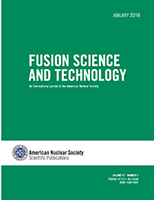
FUSION SCIENCE AND TECHNOLOGY
Leading the charge in multidisciplinary fusion research.FUSION SCIENCE AND TECHNOLOGY is a leading peer-reviewed journal published by Taylor & Francis Inc., dedicated to the advancement of knowledge in the fields of nuclear science, engineering, and fusion technology. With an impact factor that reflects its growing significance, this journal provides a platform for innovative research that addresses the challenges and opportunities within Civil and Structural Engineering, Materials Science, Mechanical Engineering, and Nuclear Energy and Engineering. Its open access option facilitates wider dissemination of groundbreaking research, enhancing visibility and accessibility for researchers, professionals, and students alike. As a member of the Q2 and Q3 Quartiles across various categories—demonstrating its reputable standing among peers—the journal plays a crucial role in fostering collaboration and sharing the latest scientific discoveries in fusion and related technologies from 2001 until 2024. This makes it an essential resource for anyone engaged in the multidisciplinary aspects of fusion science, contributing to the development of sustainable energy solutions.
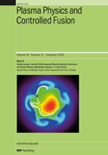
PLASMA PHYSICS AND CONTROLLED FUSION
Unraveling the Mysteries of Plasma for Controlled FusionPLASMA PHYSICS AND CONTROLLED FUSION is a leading academic journal published by IOP Publishing Ltd that focuses on advancing the understanding of plasma physics and its applications in the field of controlled fusion. Established in 1984, this prestigious journal has earned a significant reputation, demonstrated by its Q1 rankings in both Condensed Matter Physics and Nuclear Energy and Engineering for 2023, alongside impressive Scopus rankings placing it in the 79th percentile in its category. The journal serves as an essential platform for researchers, professionals, and students seeking to stay abreast of cutting-edge developments in plasma behavior, fusion technologies, and theoretical frameworks. While it does not currently offer open access options, the journal's rigorous peer-review process ensures the dissemination of high-quality research that is crucial for the advancement of nuclear energy solutions and the broader field of physics. With its commitment to fostering innovative research and development, PLASMA PHYSICS AND CONTROLLED FUSION is a vital resource for those passionate about the future of energy and scientific exploration.
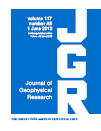
JOURNAL OF GEOPHYSICAL RESEARCH-SPACE PHYSICS
Illuminating the Dynamics of Our Planetary EnvironmentJOURNAL OF GEOPHYSICAL RESEARCH-SPACE PHYSICS, published by the American Geophysical Union, stands as a pivotal academic platform dedicated to the dissemination of cutting-edge research in the fields of geophysics and space physics. With an impressive impact factor and recognition as a Q1 journal in Geophysics and Q2 in Space and Planetary Science as of 2023, this journal offers an esteemed venue for researchers seeking to publish high-quality studies that advance our understanding of the interactions between the Earth and space environment. The journal features comprehensive coverage of topics spanning from the ionosphere to magnetosphere, facilitating insights critical for both academic and applied sciences. Researchers, professionals, and students will find that this journal not only presents rigorous peer-reviewed articles but also encourages the accessibility of scientific knowledge, enhancing collaboration across disciplines. With its dedicated readership and influence in the scientific community, JOURNAL OF GEOPHYSICAL RESEARCH-SPACE PHYSICS plays an essential role in fostering innovations within these dynamic fields.

PHYSICAL REVIEW LETTERS
Elevating Physics Knowledge with Every LetterPhysical Review Letters, published by the American Physical Society, is a premier journal in the field of Physics and Astronomy renowned for its rapid dissemination of high-impact research findings. With a distinguished history dating back to 1958 and an impressive ranking of #13 out of 243 in the general physics category, it stands proudly within the Q1 quartile, placing it in the top 6% of journals in its field. The journal focuses on brief reports of significant fundamental research across all areas of physics, making it an essential resource for researchers, professionals, and students seeking to stay at the forefront of developments in their field. Although Physical Review Letters does not offer open access options, its rigorous peer-review process ensures a high standard of quality and relevance in its published articles. With an unwavering commitment to advancing the understanding of physical science, this journal is indispensable for those looking to make a genuine impact in their research endeavors.